The ever new Rook and Pawn Endgames
The mathematical odds of getting a Rook and Pawn ending is much higher than any other endgame in a practical game. Anyone who has played or still plays tournaments/training games can attest to that. While most of the Rook and Pawn endings are believed to end in draws, it would not surprise anyone to know how easily anyone makes a mistake in these of endgames despite knowing the theory, in all levels of chess. The man of encyclopaedic and impeccable knowledge, GM Sundararajan Kidambi explains the beauty of Rook and Pawn endgames with a recent example along with a 113-year-old one and one more. Check out his enriching article. Photo: Shahid Ahmed
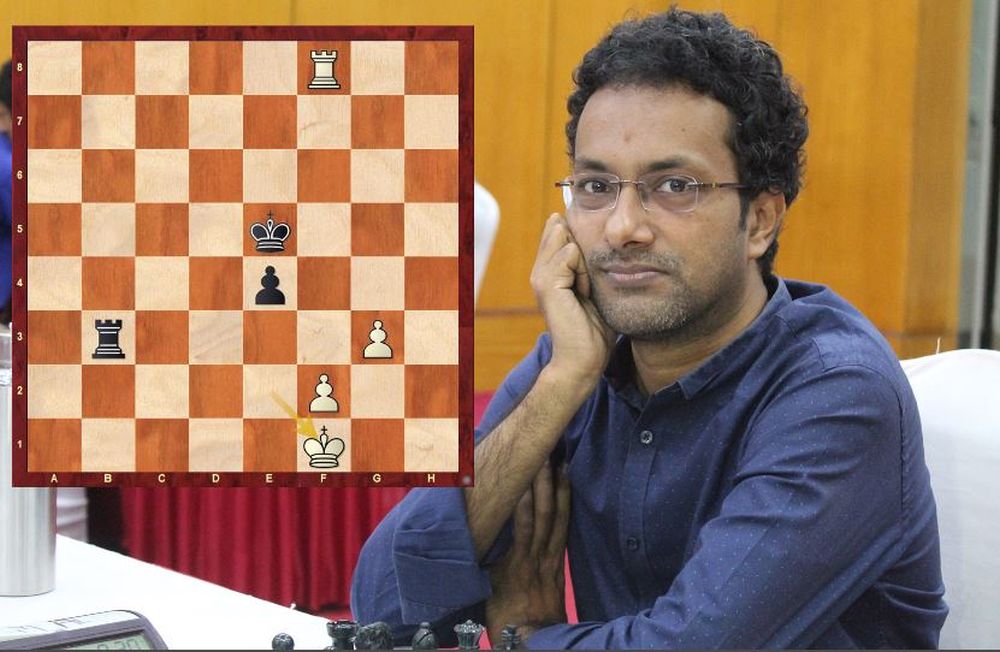

"All Rook Endgames are drawn"- Siegbert Tarrasch
Alireza Firouzja has been stealing all the limelight in the chess world recently and rightly so too! He is the youngest to reach 2800 ever and has catapulted himself to the second spot in world rankings. His final round game against Shakriyar Mamedyarov drew a lot of attention among the spectators, as if he could win he would reach 2800 and also would be increasing a whopping 30 points in the European Team Championship tournament alone! As luck would have it he reached a Rook and Pawn endgame with two pawns to Shak's 1. It was not such a common Rook endgame to say the least. Nevertheless as Tarrasch remarked the drawing tendencies in Rook endgames should never be underestimated. But that does not mean that players can play them without errors. Let us catch up with the game a few moves earlier.
Firouzja - Mamedyarov, European Teams 2021
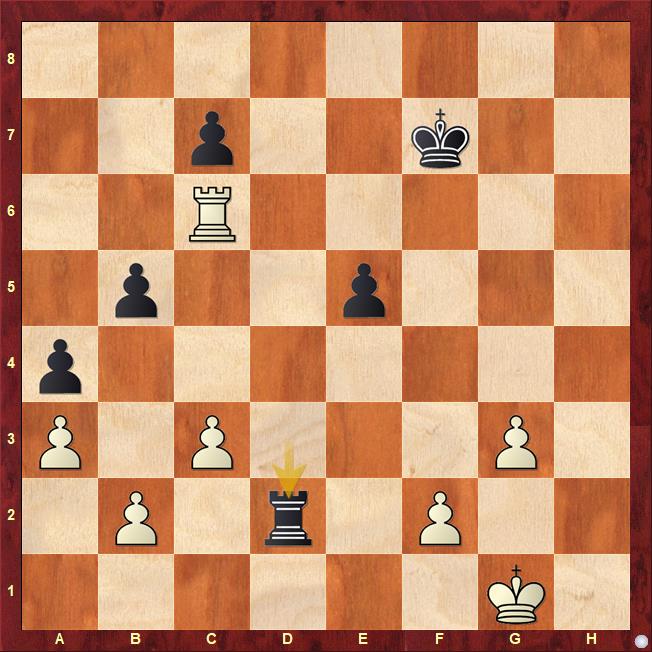
35.c4 Rxb2 36.Rxc7+ Ke6 37.Rc6 Kf5 38. cxb5 Rb3 39.b6 Rxa3 40.b7 Rb3 41.Ra6 Rxb7 42.Rxa4
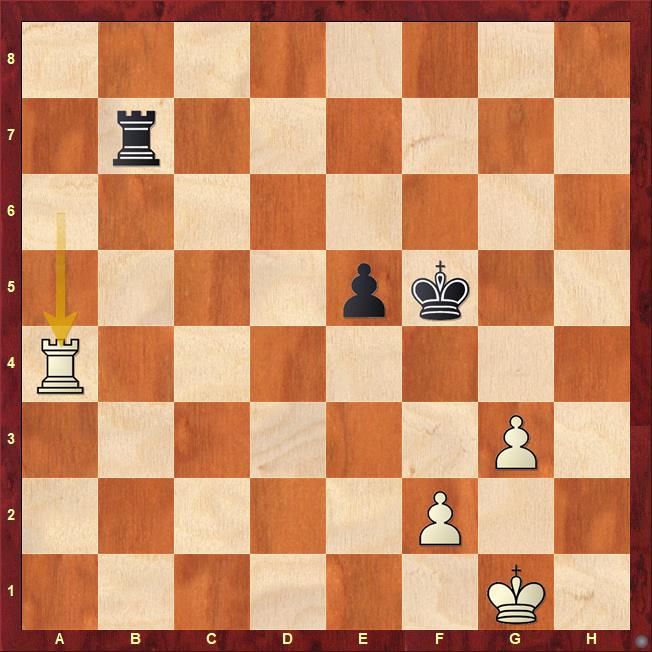
42...e4
Black can avoid this the move and instead resort to waiting. But pushing the pawn to e4 is not wrong and seems just fine for Black. After move 40, I suppose Black would have had sufficient time to delve deep into the position.
43.Ra5+ Kf6 44. Kf1 Rb3
Black wants to cut the white king off from reaching the third rank. This is a logical way to play, though by no means the only way. For instance, 44...Rb8!? is absolutely fine too.
45.Ke2 Rc3 46. Ra8 Rb3 47. Rf8+ Ke5
Now we need to pay attention to the fact that Black's king has been cut off on the f-file. So if White can walk his king over to the kingside and shepherd his g-passed pawn to promotion he will win. Of course Black could not have played 47...Kg5 48.Rf4 and white would get his king to e3 and pick up the pawn.
48.Kf1!
So, Firouzja is clearly going for the plan mentioned above. And the position is extremely critical. Without a deep knowledge of the endgame, it is even difficult to understand this to be a critical position let alone finding the right way! It would be interesting to know how much time Black had at this moment, but unfortunately I do not know this. I am assuming there was no untoward time pressure here. Let us see how the game continued.

48...Kd4? 49.Kg2 Rb7 50.Kh3 Ke5
50...Rh7+ 51.Kg4 Rg7+ 52.Kf5 would not have changed anything
51.g4 1-0
There is no way to stop the march of the g-pawn, so Black resigned
So, the question arises, is there nothing Black could have done to save the game? There is nothing obvious after all. In looking for answers to this question let us travel back in time one hundred and thirteen years!
Teichmann - Alapin, Prague 1908

59...Rb3 60.Rc5 Ra3 61.Rb5 Rc3 62.Rb8 Ke5 63. Rf8 Ra3 64.Re8+ Kd4 65. Rd8+ Ke5 66.Rf8 Rb3 67.Rf7 Ra3 68.Rf8 Rb3 69.Kf1
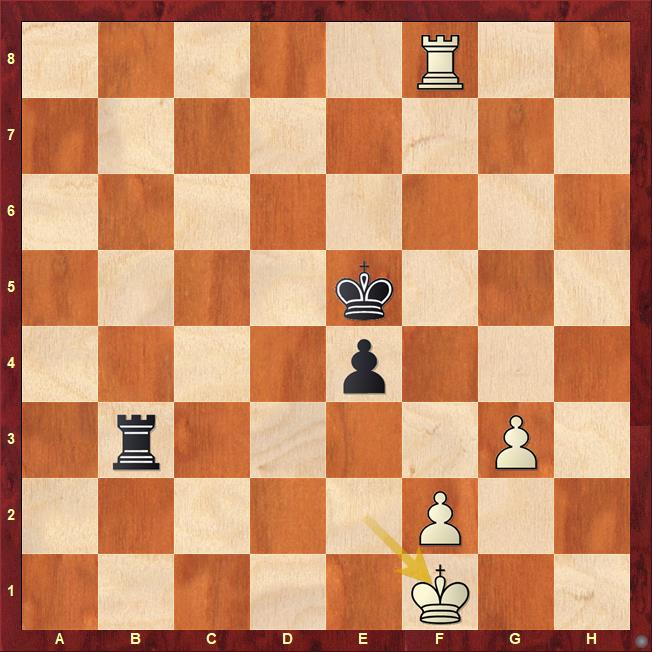
This game too has taken a similar course as did the Firouzja-Mamedyarov game. Black kept waiting with his Rook on the third rank, and after a certain point White cut Black off on the f-file and then threatens to shift his king to the kingside and help queen his g-passed pawn.
Alapin realized that this position was critical and did not want to allow White's king a free and easy path to h3. He played the counterintuitive and brilliant
69...Rf3!!
which was the only move to save the game. Psychologically it is quite a difficult decision to offer an exchange of Rooks when being a pawn down as most of the King and Pawn endgames are losing. But this thought often filters our vision for the only move to save sometimes. Exceptionally this one King and Pawn endgame seems to be a draw. The difficult part is to consider this move.
70.Re8+
The critical idea would have to be 70.Rxf3 exf3 71.Kg1 Kf5 72.Kh2 Kg4! and it's a draw because White's king lacks an entry on the kingside for the lack of an imaginary 'i' file. If 71.Ke1 Kd5 72.Kd1 Kc5 because of Black's pawn on f3 controlling e2 square, White will not be able to convert his distant opposition into a closer one. This means that the position is a draw as White cannot approach and win Black's f-pawn without giving up his own g-pawn. 73.Kc1 Kd5 74 Kb2 Kd4! =
70...Kd4 71.Rd8 Ke5 72.Kg2 Rf7!
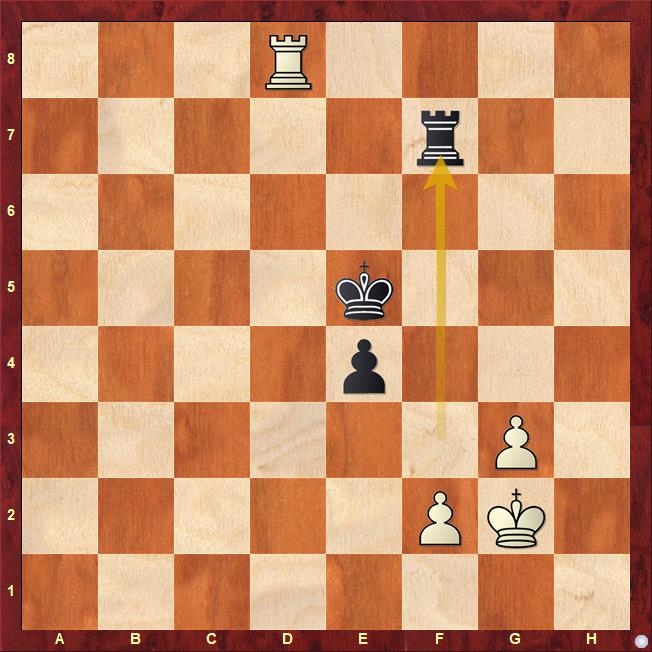
Rook is ideally placed on the f-file. It keeps an eye on the f2-pawn and ties down White's king.
73.Rd2 Rf8 74.Ra2 Rf7 75.Ra5+Ke6 76.Rg5 Rf8 77.Kf1 Rf3 78.Ke2 Ra3 79.Rg4 Ke5 80.Rf4 Rb3 81.Rf8 Ra3!
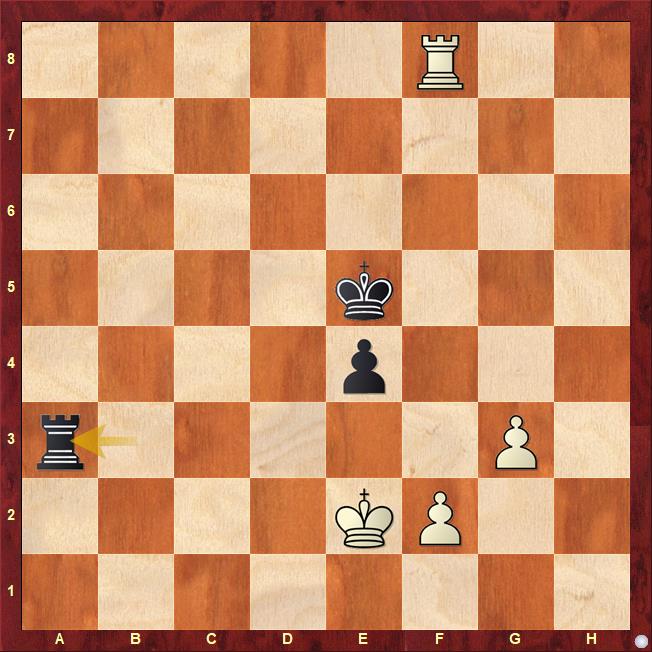
After moving back and forth, White has found no way to make progress and reached back to the earlier position he began with!
82.g4
It seems that White cannot make progress without this move. However, this pawn move means that White's king is cut off on the third rank and cannot reach h3.
82....Rb3 83.Rf5+ Ke6 84.Kf1 Rb1+ 85.Kg2 Rb3!
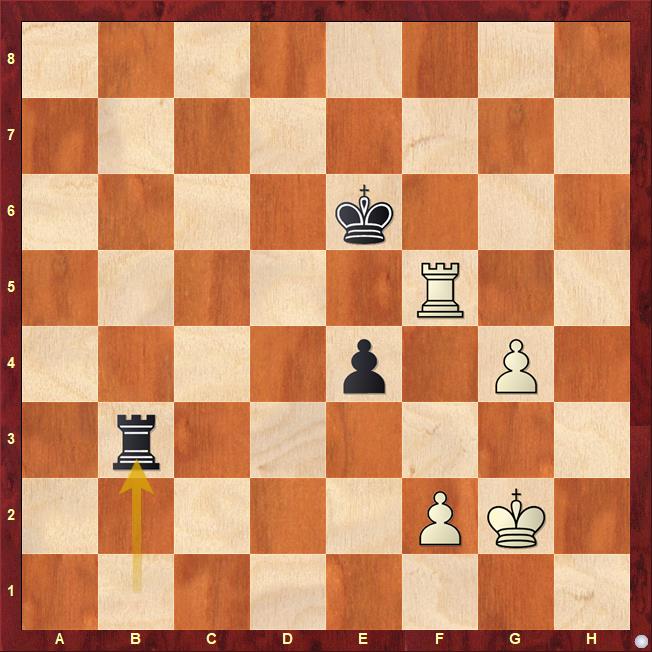
Black cuts off White's king from reaching the third rank. White may push his g-pawn without the support of the king, but that can be easily dealt with.
86.Rf8 Ke5 87.Rf5+
If 87.g5 Black can calmly answer with 87...Ra3! 88.g6 Ra6!=
87...Ke6 88.Rh5 Kf6 89. Rh3
Offering an exchange of rooks here is the only way to bring the king up. However, White needs to forget about cutting off Black's king along the f-file and Black draws easily.
89....Rb4 90.Kg3 Rb3+
and the game was drawn. The game was superbly handled by Simon Alapin and can be considered a model for how to defend such endgames!
Hellers - Rozentalis, Malmo 1997

Let us take a look at another game featuring the same endgame. Rozentalis, another good endgame player, faltered and could not hold his way in this position. This shows the difficulties that lurk behind a deceptively simple position.
61.Kf1 Kf5
This is not wrong in itself but is not necessary. And if the right idea is not known, Black can drift off to a lost position in the matter of one move! King on the e-file is ideal.
61...Ke5 62.Ke2 Kd5 63.Ra5+ Ke6 64.Ra4 Ke5 there is nothing to fear as White's Ke3 can always be answered with Rf3+. Note the ideal placement of the Rook on the f-file.
62.Ke2 Rb7?
This loses the game.
62...Ke5 there is nothing to fear as we already saw. By moving the rook away from the f-file, Black allows White to cut off his king on the f-file and also reach the safe haven of h3 to support his g-pawn's push further.
63.Rf8+! Ke5 64.Kf1!
and White is winning. We know that Rf3 is the only way to hold this position as in Alapin's game which is not possible here. Black continued further but could not stop White's King in assisting the promotion of the g-passed pawn. White won after some further moves.
Conclusion
1. The tendencies to draw in a rook endgame are huge, as was pointed out by Tarrasch, but time and again we see how easy it is to err and falter.
2. There arises critical moments in play when something that is counterintuitive to a superficial look becomes absolutely necessary. If we truly understand the needs of the position, it is possible to find such moves.
3. There are several fundamental principles seen in action in this endgame, like Cut off on the f-file, the possibility of a pawn endgame draw due to the peculiar structure of pawns and finding the ideal placement of King and Rook for both the defensive and attacking side. To integrate all this and find the clear path in play is the key to the art of endgame play.
Perhaps with quickening of time controls and abolishment of adjournment sessions we have lost a bit of our ability to synthesize and holistically conceive plans in the endgames !? A study of endgames never ceases to amaze and teach us new facets of the game always.
Replay the games
About the author
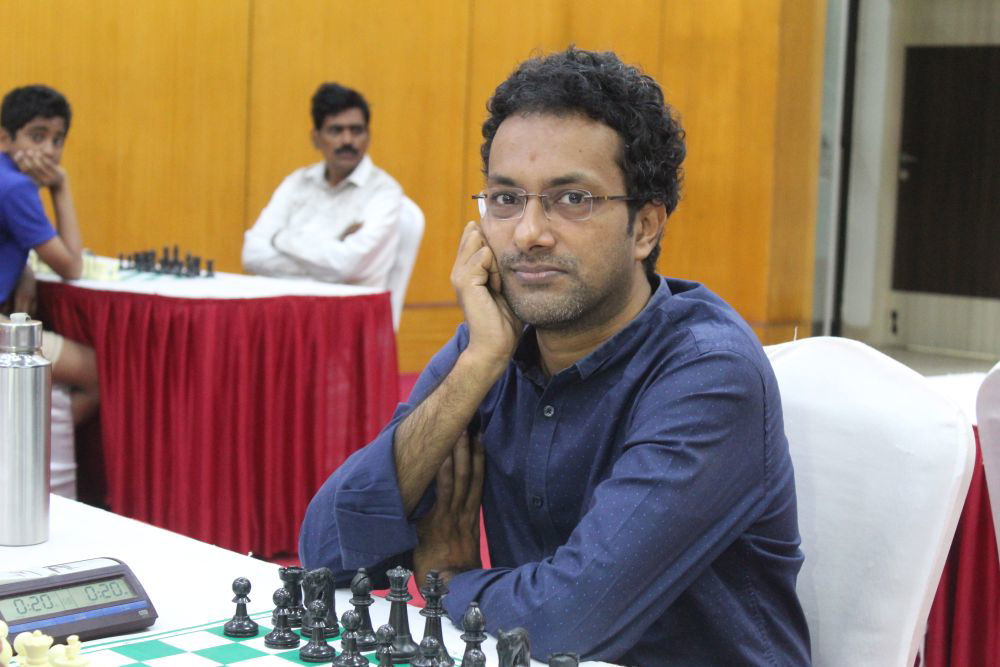
ChessBase India is happy to see GM Sundararajan Kidambi writing his fifth post of the year in his blog "Musings on Chess". Knowing what an encyclopedic knowledge the grandmaster from Chennai possesses, I think we are in for a treat! One can only hope that Kidambi continues writing regularly! We will keep reminding him about it!
Links
The article was edited by Shahid Ahmed





































